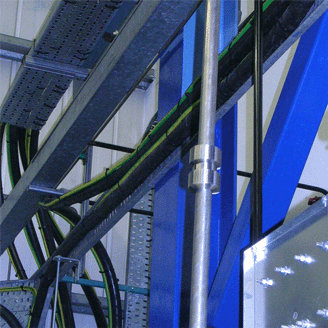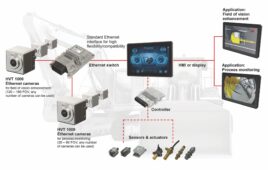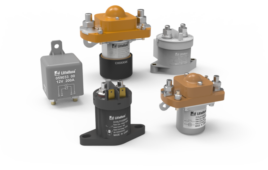Not much has changed in industrial tube fitting design in the last 50 years,” said Parker Instrumentation’s Kevin Ballard. Until recently, shipbuilders were often locked into using welded tube fittings in applications requiring leak protection above approximately 6,000 psi (413 bar).

The multiple profiles mean that each sealing point bears less pressure than a traditional twin-ferrule fitting, so Phastite can also be used with thinner wall tubing.
Large vessels sometimes require thousands of tube runs with several fittings each that are often welded and installed in-situ. To fuse the fitting when tubing is close-fitted against panels and bulkheads, welders typically lever the tubing away from the target material. Because the
levering action imposes stress, testing using non-destructive x-ray inspection may be necessary (e.g. a naval vessel), which adds considerable cost to an already lengthy installation process. However, with Phastite, a ready-to-apply, single-piece, pushbutton connector, the tubing remains stationary in situ during assembly. What’s more, it has a 20,000 psi (1,379 bar) pressure rating for marine applications.
Each end comprises a collar and body components. To make a joint, insert the tube, and then push the collar along the fitting body until it reaches a dead stop using a simple handheld hydraulic tool. Toothed profiles grip the tubing to form the high-pressure seal. Unlike welding, the tool requires no skill to use, ensures proper first-time assembly. Connection is simple, and installation takes only
seconds.

Phastite push-fit tube fitting replaces traditional welding for high-pressure surface and submarine applications.
The sealing action makes it suitable for vibration-prone environments such as rotating equipment and applications susceptible to pressure surges. Phastite’s gripping profiles create a compression seal in a way that retains all of the tubing’s strength. With cone and thread systems, however, a thread cuts into the tubing, which reduces the fitting’s tolerance for vibration.
During the development tests for Phastite, a tube run deformed under pressure to 300 mm (11.8 in.) without leakage. Parker’s design team increased the pressure until destruction. The tubing burst before the Phastite joint (at 31,908 psi/2,200 bar). Because of the action of Phastite’s multiple gripping profiles, cavities accept deformation of the tubing. The hold is strong, leak-tight, and actively stops tubing blowout under pressure.

Applications include high-pressure test equipment, high-pressure hydraulics, deepwater oil and gas drilling, ROVs and subsea equipment, laboratory testing, and high-pressure machinery such as water-jet cutters and sprinkler systems.
Parker Hannifin Corp., Instrumentation Products Division
www.parker.com
:: Design World ::
Filed Under: Tubing components, Off highway • construction • agriculture





Tell Us What You Think!